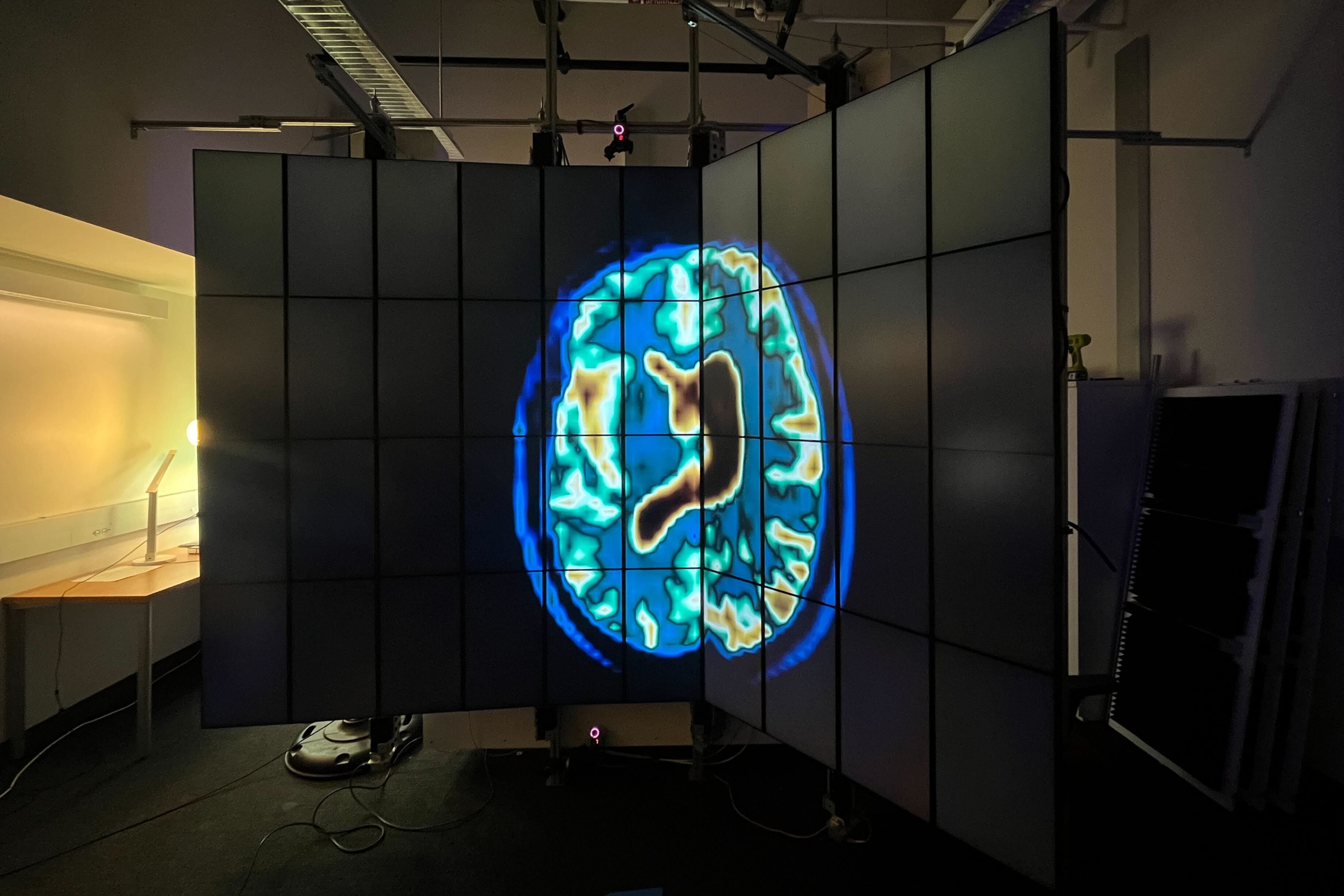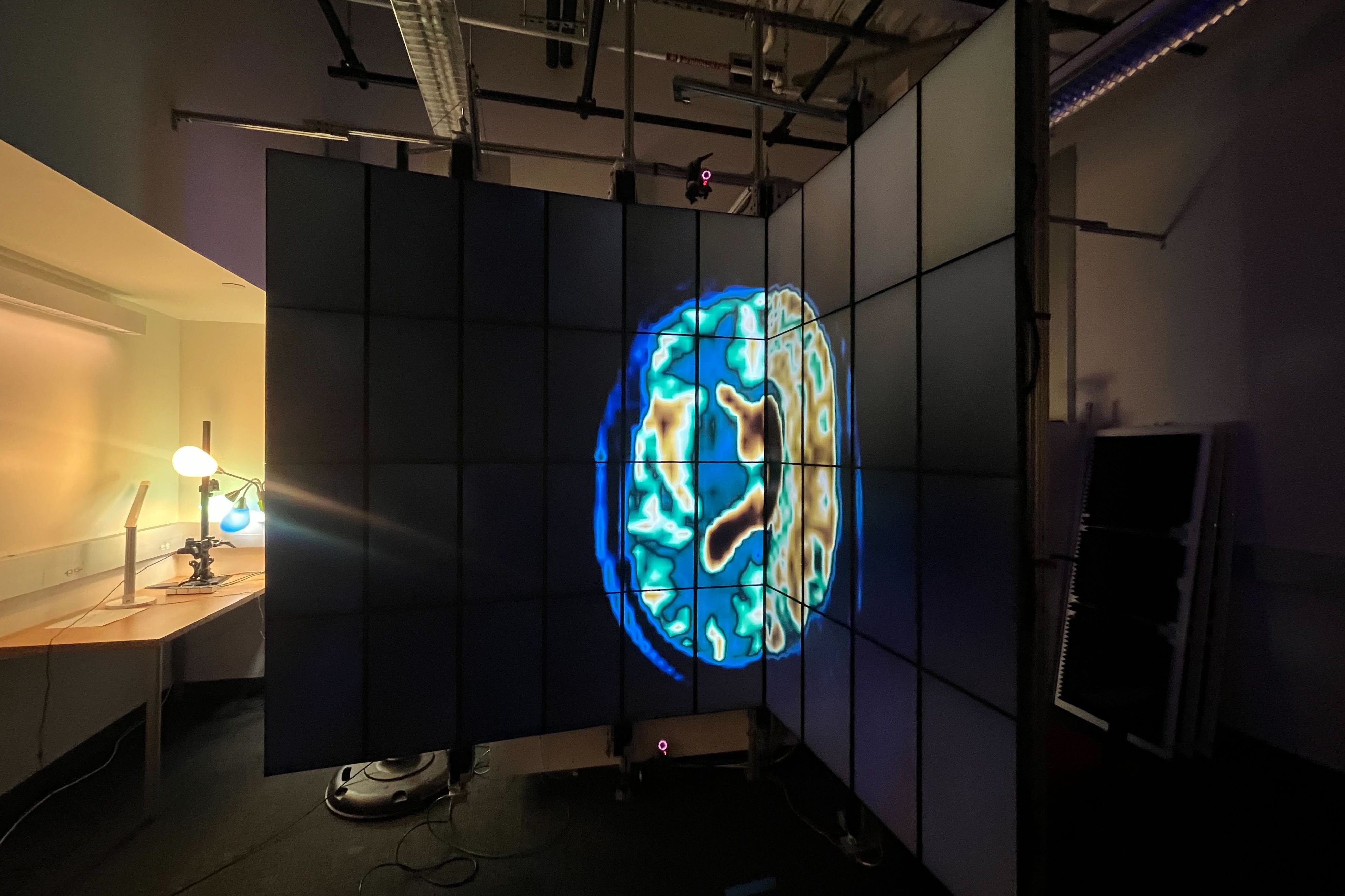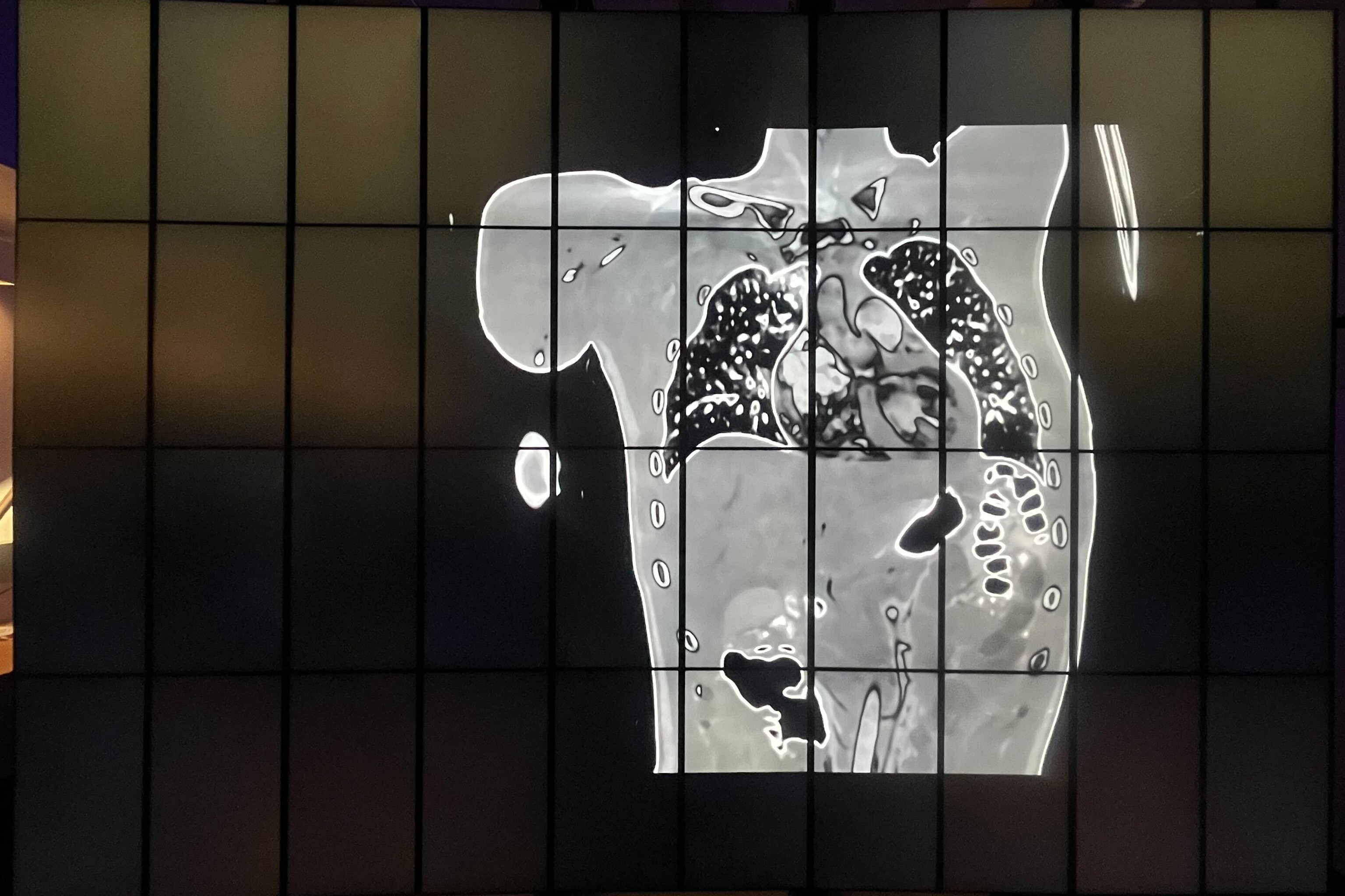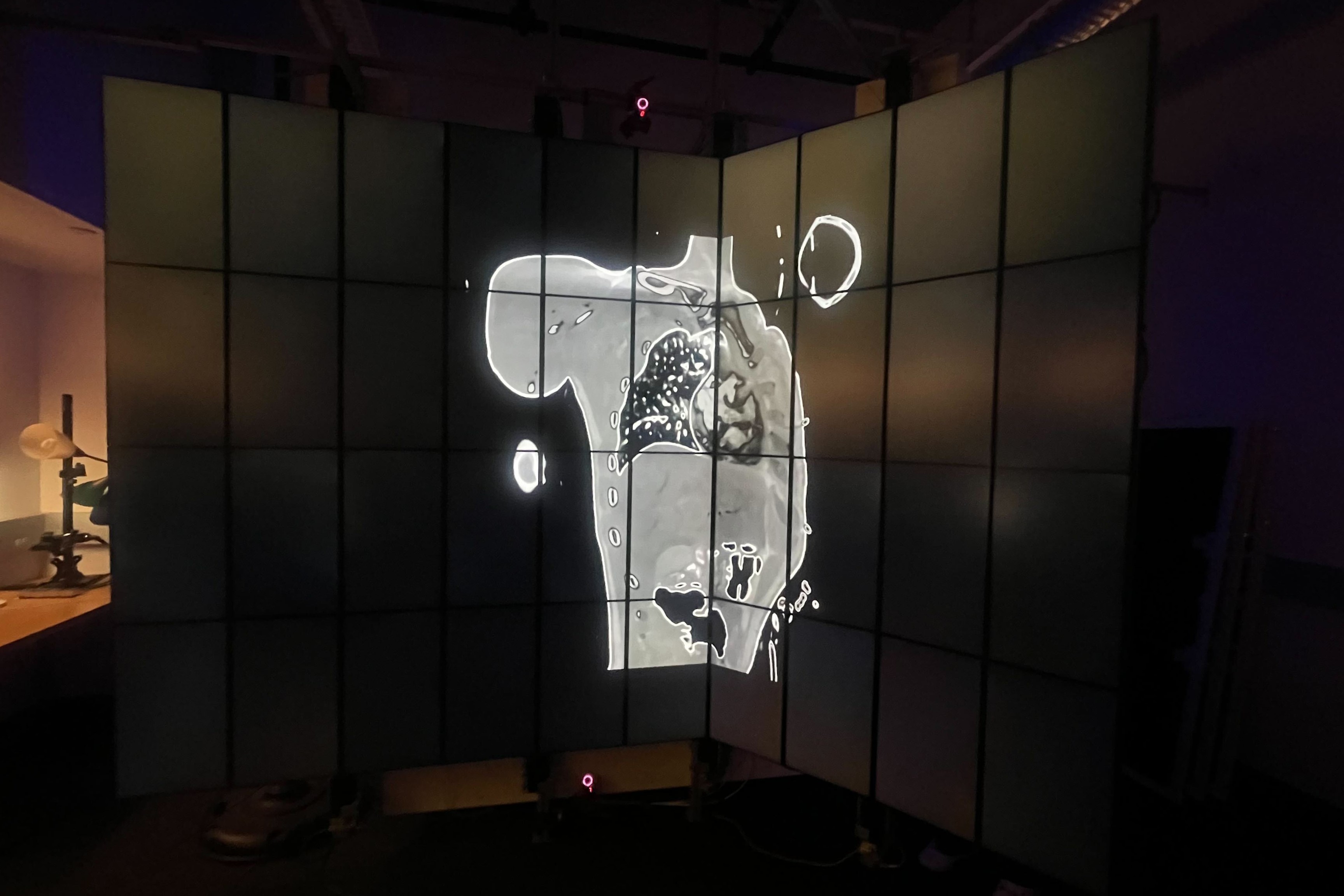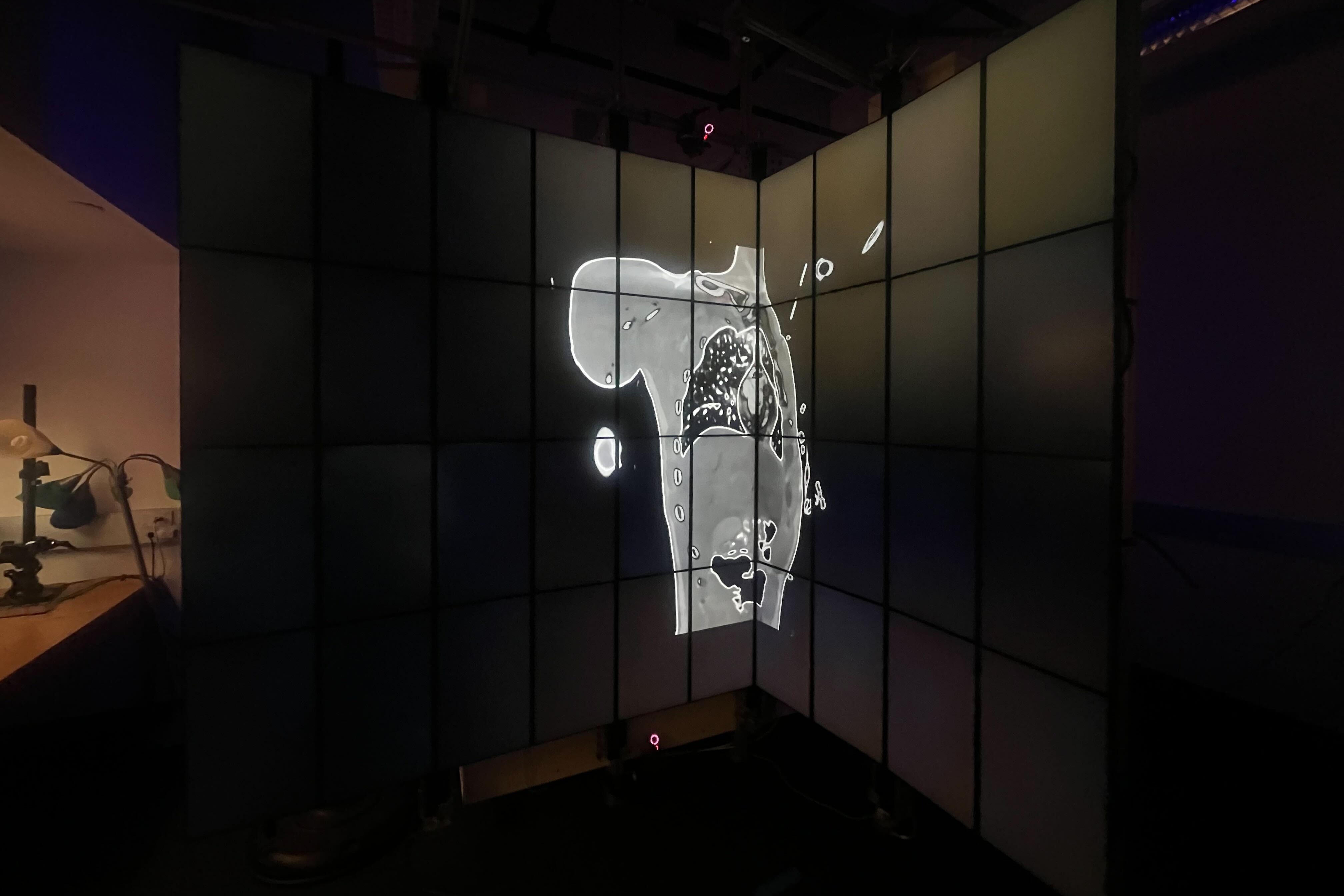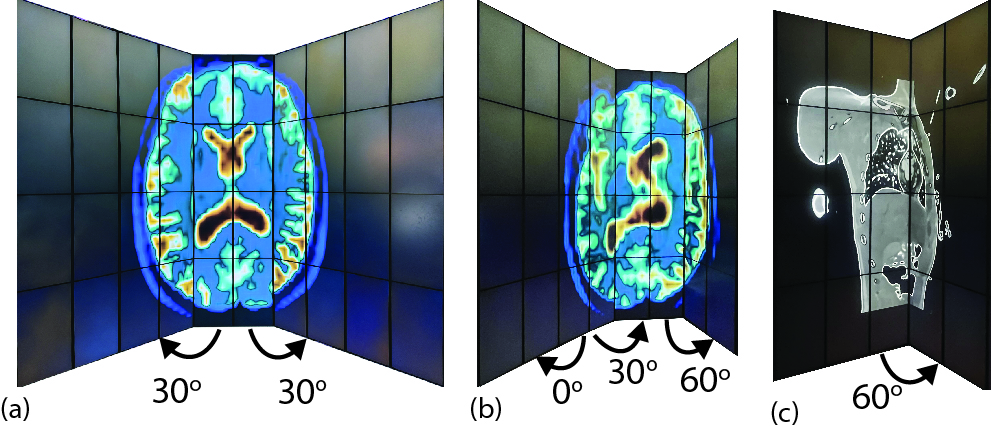In Human-Computer Interaction, a fundamental concept is designing interactivity such that the action intuitively “affords” its generated response. For example, a light switch is designed in a way that naturally encourages flicking it.
The latest immersive facility at Stony Brook University, the FlexiCAVE (Aamir et al., 2025), features dynamic columns with hinges that afford physical rotation. Leveraging this capability, we developed the concept of PIVoT: Physical Interaction to Virtual Transformation.
A novel use case of the PIVoT paradigm is radial slicing of volumetric datasets. By physically rotating the columns of the FlexiCAVE, users can dynamically slice through volumes along planes corresponding to the facility’s physical configuration. This approach allows detailed internal analysis of scientific volumetric datasets.
Radial Slicing through an MRI (Magnetic Resonance Image) of a Human Brain. On the left, we have the FlexiCAVE in its flat configuration. Middle, with the left column set rotated such that the angle between them is 45 degrees. Right, the angle is 90 degrees.
Radial Slicing through a CT scan (Computed Tomography) of a Human Chest. On the left, we have the FlexiCAVE in its flat configuration. Middle, with the left column set rotated such that the angle between them is 45 degrees. Right, the angle is 90 degrees.
Slicing which involves orientations involving rotations of other columns are also possible, which allow for a more vigorous exploration. This is shown in the following image.
Some possible orientations of the FlexiCAVE with the rendering showing slicing based on that orientation.
References
2025
-
FlexiCAVE: A Dynamically Configurable High-Resolution Display Facility *
Zainab Aamir, Saeed Boorboor, Ahamed Shoaib, and 2 more authors
2025
Large high-resolution displays (LHRDs) have become essential tools in visualization and visual analytics, providing expansive and flexible visualization spaces and supporting simultaneous details and context and intuitive physical navigation for data exploration. Despite significant advancements in display technology, particularly regarding display resolution and form factors, a persistent challenge has been determining optimal display configurations for diverse analytical tasks. This has motivated us to design and construct the FlexiCAVE, a novel LHRD facility uniquely designed with rotatable display columns, enabling dynamic horizontal curvature adjustments. Comprising forty high-pixel-density displays arranged across ten columns, the FlexiCAVE offers an active stereo system with a total resolution of approximately 83 million pixels, and the columns can rotate inward up to 90° per hinge. Unlike existing static or single-configuration curved displays, the FlexiCAVE dynamically adapts its curvature in real-time, supported by our custom-developed rendering engine that synchronizes camera views with the changing display layouts. To demonstrate the utility of the FlexiCAVE, we present several application scenarios showcasing the facility significance and flexibility, including interactive radial slicing in volume rendering through physical column rotation and the dynamic switching between multivariate plots. With its adaptability and innovative design, we believe that FlexiCAVE represents the next generation in LHRD technology, setting new standards and design spaces for future large data visual systems.

